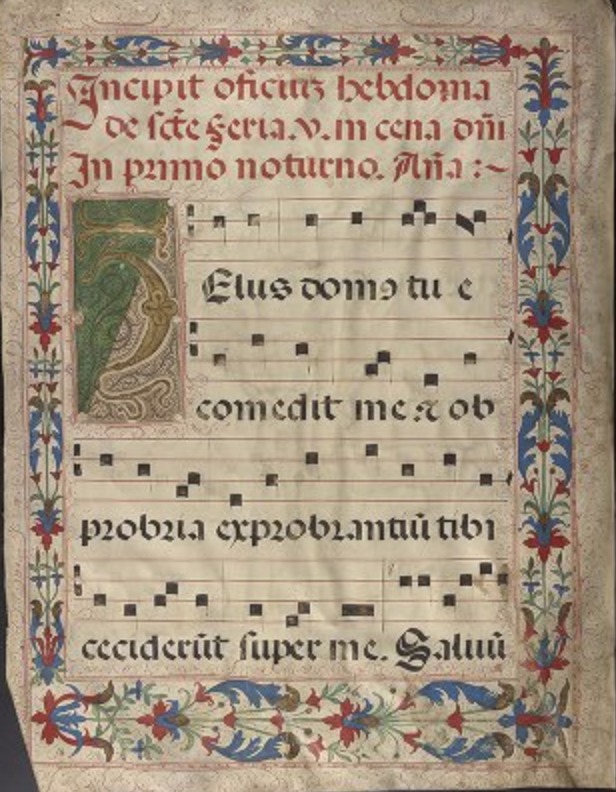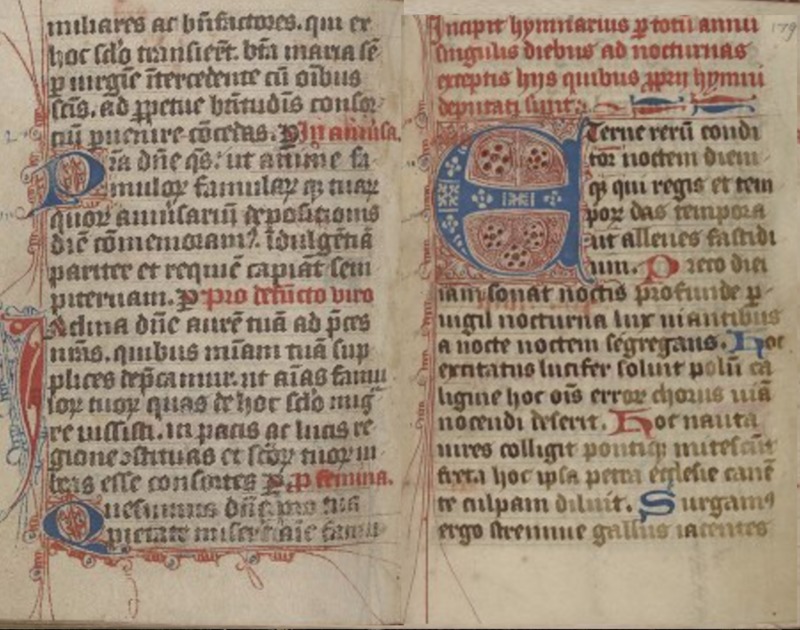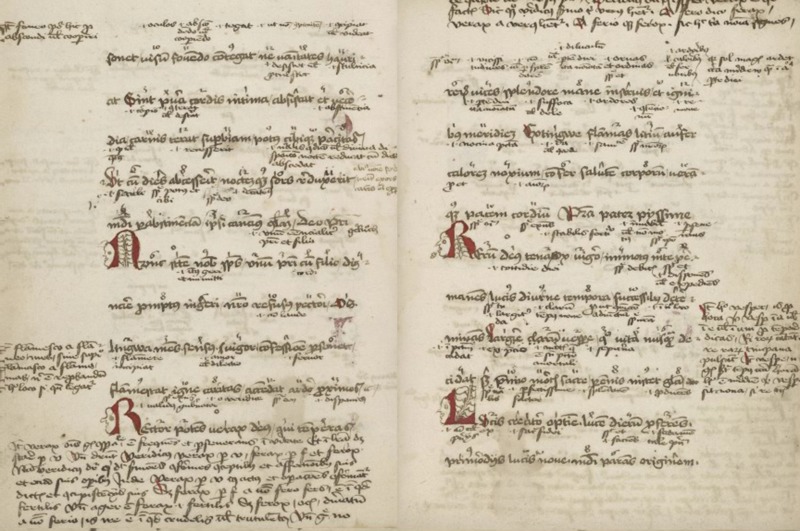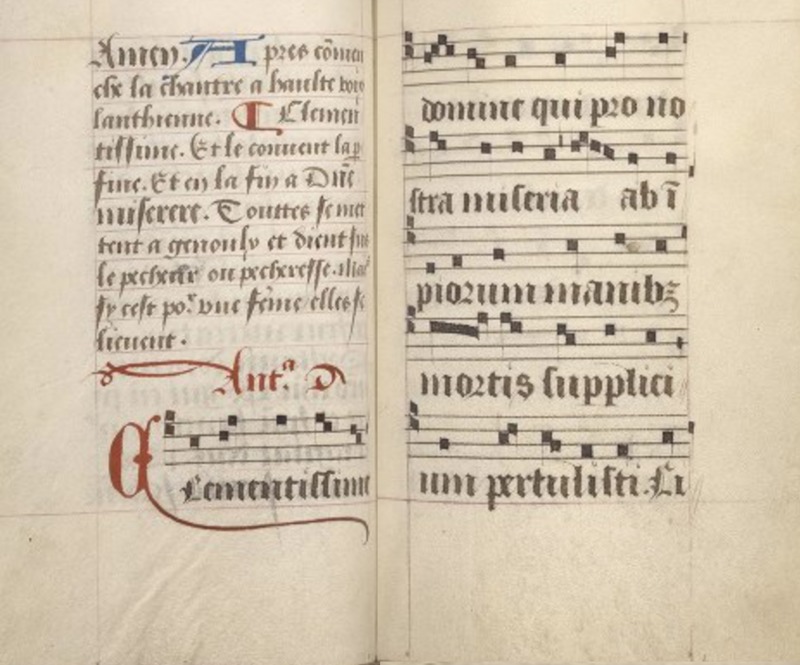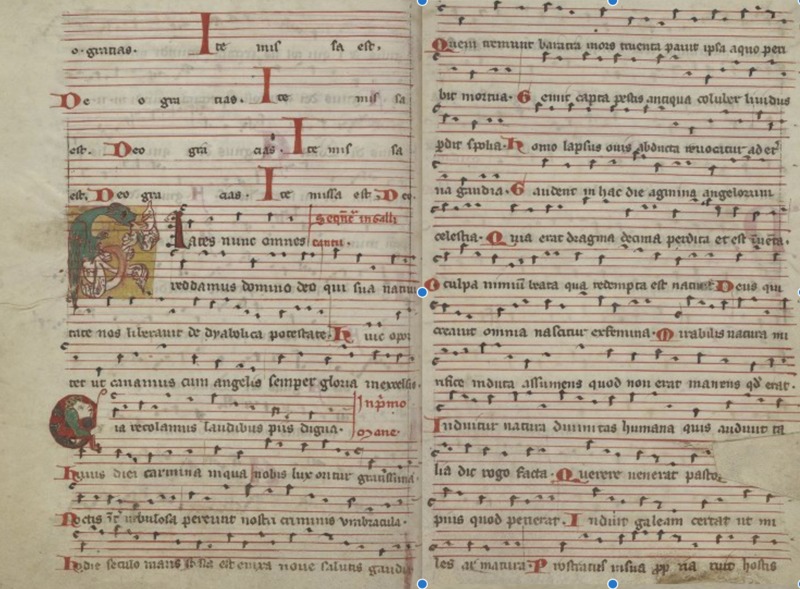Part II: Sacred Song
These two leaves form a fragment from a liturgical codex or service book in Latin written on parchment and is possibly of Spanish origin. The text comes from the choral portion of the Divine Office for the Holy Week Triduum, beginning with Matins on Holy Thursday and continuing through Vespers on Holy Saturday. Given its large size, these fragments were most likely from a choral antiphony, and the text is set for monophonic chant, to be performed by a choir. The musical notation uses square Gregorian neumes on a four-line staff and has illuminated letters and rubricated psalm verses throughout.
Katherina Mast, a Cistercian nun with connections to the Cistercian abbeys of Valliers and Hertogendal and Valduc, penned this Psalter in a Gothic book hand. It contains musical notation for two measures of intonation for most psalms, in a second, contemporary hand, as well as a section of hymns without music. Full musical notation exists for the requiem Subvenite Sancti Dei, the responsory for the burial service, and the chorus Angelorum. The final section is comprised of proper texts from the temporal and sanctoral cycles with elaborately decorated penwork initials throughout.
This collection of hymns and prayers is also bound with later printed pastoral works appropriate for a priest. The first six gatherings of the manuscript section contain hymns and prayers in Latin with interlinear German, each followed by a German translation. For example, the Latin sequence Ave Praeclara Maris Stella contains German text interspersed, which has been added by another hand on the final leaves of this section (fols. 70v-72r). The final gathering of the manuscript section in a different hand and format contains thirty hymns in Latin. The text also features many anthropomorphic initials throughout. Printed works precede and follow the manuscript portion, such as a 1519 edition of the Liber Florum Beati Bernardi Abbatis Clarevallensis printed in Augsburg. Other printed works following the manuscript are a 1515 edition of the Stella Clericorum, an anonymous 13th-century pastoral handbook, and the Secreta Aacerdotum by Heinrich von Langenstein.
This compilation of texts and chants was designated for a French Dominican convent, including the service for after the death and at the burial of a member of the order, as well as the processions for Palm Sunday, Maundy Thursday, Good Friday, Easter, the Ascension, Corpus Christi, the Assumption, and the Purification. The text features liturgical directions in French destined for the women of the order and the Latin liturgical texts provide both feminine and masculine forms. Notated text has been added in a later hand to the first and last leaves and informal notes in French also appear on the first leaf.
This portable gradual from the diocese of Brixen (now Bressanone) in northern Italy contains chants for the Mass, most probably for a Benedictine monastic foundation. While the central text was penned in Italy between 1300 and 1325, it was written by at least four different hands using a blend of Italian and south German Gothic scripts, along with Hufnagelschrift musical notation. The front pastedown is a German leaf featuring the Credo, Gloria, and Da pacem Domine was written ca. 1400; the back pastedown is a Marian text on a fragment from a thirteenth century Italian missal or gradual, and the text featured on the spine of the book comes from the same fragment or one very similar to it. Both textual and musical marginal notation throughout indicate extensive use over time, and it is decorated with anthropomorphic and zoomorphic initials.
